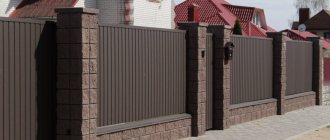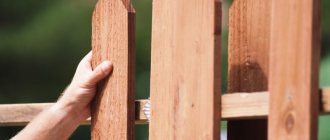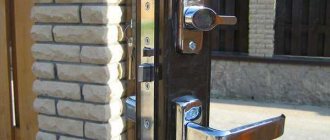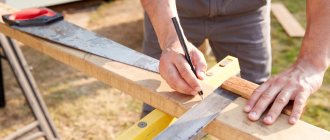SHARE ON SOCIAL NETWORKS
FacebookTwitterOkGoogle+PinterestVk
PVC film for a swimming pool is a modern coating that is widely used in its finishing. The material simultaneously performs two functions: waterproofing and decorative. It turns the tank into an airtight bowl in a teal hue. What types of products exist, how to choose the right film for a pool and how to finish it are described in detail in this article.
PVC film for pools is a modern material that performs decorative and waterproofing functions.
PVC film for the pool: characteristics of the waterproofing material
A modern coating that is attached to the walls of the tank is a polyvinyl chloride film. It has another name - liner. The film is made of dense PVC, between the homogeneous layers of which a reinforcing layer in the form of polyester fiber is placed. During the manufacture of the liner, special stabilizers are introduced into the mixture, due to which the final product exhibits increased resistance to ultraviolet radiation.
The pool film is made from polyvinyl chloride, which is treated with a fungicidal and antimicrobial compound
The product is treated with a fungicidal and antimicrobial composition, which protects the material from the effects of pathogenic bacteria, microorganisms, fungi and spores that are in the water. PVC film intended for swimming pools is certified, which indicates the safety of its use. In order for the coating to have a shiny appearance, several layers of acrylic are applied to the product, which also improves the strength characteristics of the product.
You can buy a pool film, the price of which starts from 300 rubles/m², in a width of 3.05; 6.1; 9.15; 12.2; 15.2 m. The length of the product is usually 15.2; 30.5; 45.75 and 61.0 m. The material is supplied in rolls.
Waterproofing - why is it?
Why is waterproofing needed
? Agree that not everyone is an expert in this field. The importance of waterproofing and its proper design is often discussed. But why is she? What will its use give?
As you know, waterproofing is a protective layer for any building structure (in this case, a swimming pool), protecting it from the penetration and negative effects of water. Since the pool is directly exposed to this liquid, it is important that it does not penetrate the material. Why? When moisture seeps into the concrete, it will deteriorate and your pool will not last long and will need to be repaired or completely rebuilt. This is one of the most important stages of work. It is important to note two types of pool waterproofing:
- Internal waterproofing.
- External waterproofing.
Internal waterproofing
It is the internal waterproofing that is carried out in the pool bowl itself to protect the material from water penetration. There are many different ways to do this, which we'll talk about next.
External waterproofing
The essence of external or external waterproofing is to protect concrete from the penetration of moisture from the soil by adding plasticizing and mineral additives to its composition. This helps to increase water permeability and mechanical strength of the structure. Another option is to install special profiles made of expanding rubber. It is also worth noting penetrating compounds that are applied to concrete for external waterproofing. These are special mastics that are easy to apply yourself.
Types of finishing materials for PVC pools
There are three types of PVC film:
- single-layer;
- multilayer;
- butyl rubber.
Single-layer blue or light blue PVC film for the pool is presented in a product with a thickness of 0.65-0.8 mm. This covering is often used for a collapsible pool and comes with it. Covering the frame base, the material absorbs the pressure from the water that has filled the pool. The outer surface has a rough coating, which creates an anti-slip effect. All components of the material fold compactly, acquiring a small-sized appearance. The weight of the product is only 1 kg.
PVC film can be single-layer, multi-layer and butyl rubber
Multilayer PVC film for a pond, the price of which starts from 1,500 rubles. per 1 m², feels like linoleum. The film is presented in the form of a three-layer material with a thickness of 1.5 mm. The liner consists of two layers of PVC, between which there is a fabric layer with Kevlar fibers. The layers are connected by welding. This durable material is used for stationary pools. The outer surface may have a glossy or textured finish. The liner is characterized by a wide color palette. The product can be plain or with an applied pattern in the form of a mosaic, imitation of natural stone or a photograph. This decoration will become a real decoration of the yard.
Collapsible pools are equipped with PVC bowls. For stationary tanks, the material should be cut and welded on site. However, both options can be used if the collapsible tank is large. In this case, the film for the frame pool included in the kit is immediately installed, and then the surface is covered with a liner bag made of reinforced fabric, which is welded and secured around the perimeter of the structure using a bandage tape.
The most durable, wear-resistant and reliable is a two-layer butyl rubber membrane without reinforcement. The material exhibits increased resistance to mechanical stress and sudden temperature changes. The liner is able to withstand high and low temperatures without compromising the integrity of the structure. The film is characterized by high elasticity, due to which it does not require much effort when lining the pool. This liner is used for large volumetric tanks.
Covering installation
Film coverings can simply be pulled over the pool and secured well. Therefore, everyone can do it here even without step-by-step instructions. However, you can also make a polycarbonate pool cover yourself. This will be a little more difficult to implement, but if you strictly follow the instructions, then there will be no problems. Let's consider the phased construction of this canopy.
Surface preparation
First, you should dig neat holes around the perimeter of the pool. They do not have to be very deep, but they must be able to accommodate racks made of profiled pipe. Next, you need to place these posts in the holes and concrete them. All pillars installed in a horizontal configuration are connected with the same profile pipe.
Making arches
Arches are usually ordered, but they can be welded independently from profile material. Bends are selected based on the overall design and customer requirements if parts are ordered from professional workers.
The protective film can be rolled up into a niche under the pool Source poolmarket.by
Installation of arches
Next, the arches are installed. They should stand every meter. The rest is joined on special rafter legs. This configuration is necessary because the maximum width of the arches is about two meters. After this, the arches are pulled together using the same profile pipe. Then canopies made of polycarbonate sheets are installed.
Covering with profile
The entire installation process ends with the back and side edges of the installed polycarbonate being covered with a special profile for the strength of the structure. Next you need to check the entire structure. If there are no flaws anywhere, then the installation can be considered complete.
Advantages and disadvantages of a liner for swimming pools
High-quality PVC film has a service life of about 20 years. Thanks to its elasticity and stretchability, the material is quickly and easily applied to the tank frame, clearly following its contours. During the manufacturing process, the film is impregnated with special substances, which makes it resistant to biological and chemical influences. Compared to other finishing materials that are used to finish a swimming pool, PVC film has the lowest cost.
PVC film for pools is very durable and has a low cost
There is no risk of cracks or chips, which are possible when using ceramic tiles or mosaics. If there is a violation of the integrity of the product, its repair is carried out quickly and inexpensively.
When covering the surface with PVC film, there are no sharp edges, which eliminates the possibility of injury. Thanks to the wide variety of material designs, the liner is not only a reliable waterproofing of the pool, but also a real decoration.
Helpful advice! Using a liner, you can eliminate small pool leaks.
Among the disadvantages of the material are the following:
- the likelihood of scratches and abrasions on the surface of the product;
- labor-intensive process of cleaning the pool;
- impracticality for tanks with complex configurations;
- violation of the integrity of the surface when exposed to cutting or piercing elements;
- cannot be used in heaving soils;
- the visibility of butt seams disrupts the harmonious, holistic appearance of the surface;
- liner without acrylic coating does not tolerate low temperatures, which causes bubbles and cracks.
PVC film is elastic and stretches well, thanks to which it perfectly follows the contours of the pool
Conclusion
The service life of the entire structure depends on the degree of insulation of the concrete bowl from moisture. The best effect is achieved by combined waterproofing based on polymer components. They penetrate the pores of concrete, push out water and create a strong, elastic layer. Before starting internal waterproofing of the pool bowl, you need to clean the surface and treat it with soil mixtures.
If you find it difficult to choose a material for waterproofing a swimming pool, do not know how to organize the work and which team to hire, use the service on the website poliol.ru. There are more than 550 registered teams of performers who are ready to help. Leave a request on the website, a pool waterproofing consultant will advise you on the cost of the work and help you select contractors. It's free.
How to choose the right PVC film for swimming pools
PVC film for a pond or pool must meet the following criteria:
- be durable, not wrinkle or crumble;
- exhibit resistance to UV rays, low and high temperatures;
- withstand high pressure without significant deformation and damage to the integrity of the material;
- be resistant to mechanical stress.
When choosing a suitable material, you should pay attention to the thickness, design of the film and the manufacturer of the product. To optimize material costs and ensure a sufficiently strong, reliable and durable coating, you should take into account the depth of the pool bowl. If it is within 2 m, the film should have a thickness of 0.5-0.9 mm. It is necessary that in other cases the material is no thinner than 10 mm. For pools with complex configurations, the liner must have a thickness of at least 15 mm.
Helpful advice! For reservoirs with a relief shape, it is advisable to buy thick, expensive products in the form of bubble wrap for swimming pools. For small structures with a smooth bottom, you can use budget options.
A high-quality film must be durable and resistant to mechanical stress and UV rays
The film has different designs, which affect the performance properties of the material. A conventional liner has the lowest cost and is characterized by low strength. It is advisable to use it for prefabricated small-sized pools. The reinforced liner can withstand significant loads, has high performance characteristics and can be used for any tank.
To ensure safety, you should buy a PVC film with an anti-slip coating for the pool, the price of which will be higher than other analogues. Liners with acrylic coating have bactericidal protection. The material does not deteriorate. Microorganisms, bacteria and fungi do not multiply on its surface. Such products are characterized by the highest service life, which undoubtedly affects their cost. The price of PVC film starts from 1500 rubles/m².
In order to select high-quality material, you should cut along the end of the product. If the structure of the material crumbles and flakes, this indicates a low-quality film that will not last long. A high-quality product has a homogeneous structure with evenly spaced threads. The fabric should stretch evenly in all directions. The relief pattern should be uniform.
Using liquid glass
Liquid glass Liquid glass
is a solution consisting of potassium or sodium silicates. This waterproofing option can be performed during the construction of the pool. Liquid glass is added to the concrete itself, in a ratio of 1 liter of glass per 100 liters of finished concrete. Thanks to this, it becomes more durable, resistant to mechanical damage and will last longer. And what is most important for you, liquid glass will allow concrete to reduce its ability to absorb moisture.
Once your pool is already built, liquid glass can be applied directly to the concrete. There are special coating products that you can use to achieve good waterproofing and also protect concrete from mold and mildew. In addition, the coating will protect the pool from the effects of temperature, corrosion and ultraviolet radiation for 5 years. It is also worth noting that it will be easy to carry out such waterproofing yourself. The price of glass is not so high, and the material consumption will be small.
Application of liquid glass
Popular manufacturers and prices of PVC films for pools
Today the liner is presented in a wide variety of species. The product is produced in rolls, so the price of pool film is determined per square or linear meter of the product. The cost of the product depends on the type of material, its thickness, elasticity and manufacturer. The cheapest option is a single-layer coating. The price of blue PVC film for a swimming pool is on average 300 rubles/m². A multi-layer product will cost 1,500 rubles/m². A liner with a textured anti-slip surface can be purchased from RUB 1,800/m².
Depending on the quality and manufacturer, the cost of the film varies from 300 to 1800 rubles. for 1 m²
Among the popular manufacturers that have proven themselves to be the best in the construction market are the following: Elbtal (Germany), AlkorPlan (Belgium), Flagpool (France), Ceplastik (Spain), Lazur (Russia). The German company produces a wide range of high-quality PVC coatings with reinforcement, reflective effect and decorative patterns. The cost of the liner starts from 1,400 rubles/m².
The Belgian company specializes in coatings with imitation natural stone. You can buy PVC film for a swimming pool from 1,500 rubles/m². The French and Spanish manufacturer offers a less diverse range. Mostly monochromatic models of different shades of blue are presented here. The cost of the material starts from 1000 rubles/m². The most affordable products are offered by the Russian manufacturer. The average price of a classic blue film will be 650 rubles/m².
Cement based solutions
Mixtures for waterproofing swimming pools consist of cement, sand, and polymers. This insulation option is excellent for outdoor and indoor pools, as it can withstand temperature changes. A high degree of adhesion (adhesion to the surface) makes this material convenient for independent use. Tolerates loads well. The disadvantage is that the material is not elastic, so it can form cracks or pores under load. This problem can be solved by making silicone seams that will take the load when compressed or stretched.
Waterproofing a swimming pool with a cement-based solution
How to make a pool from film: the main stages of work
Today, using PVC film, you can use PVC film to line a pool with your own hands, cheaply, quickly, and very simply. Installation consists of the following steps:
- preparation of the base;
- geotextile backing devices;
- film cutting;
- installation of the liner;
- seam processing.
Before you begin installing the PVC film, you should make sure that you have the necessary characteristics for the pool bowl. The structure must have a flat and smooth surface. It is necessary that the edges of the pool walls have sufficient strength to withstand drilling. The tank must be equipped with adequate groundwater protection.
Before installing the film, you need to prepare all the necessary tools
To perform the work you should have the following materials and tools:
- polyvinyl chloride film;
- a backing made of non-woven material;
- corner or fastening strip;
- welding hot air gun with the necessary accessories in the form of an iron brush and nozzles;
- silicone roller;
- screws, dowels;
- pressure roller for butt joints;
- elastic glue;
- perforator;
- screwdriver;
- roulette;
- construction knife or scissors.
DIY pool made of PVC film: preparatory stage
Before starting work, you should thoroughly clean the pool bowl. This will help identify all surface defects, which should be perfectly smooth. If the walls are made of brick, they should be pre-plastered and then sanded. If the surface is concrete, it will have to be puttied. In case of serious damage to the bottom surface, it is recommended to fill in a self-leveling screed. Particular attention should be paid to the sides and corners. In these places it is necessary to ensure maximum adhesion of the solution to the base.
All embedded parts of the pool must be flush with the surface and be equipped with sealing flanges that provide a tight connection. Flanges are selected from stainless steel or plastic with a chlorine-resistant rubber gasket. Next, you should remove all debris from the pool.
Before proceeding with the installation of the film, it is necessary to thoroughly clean the pool bowl
Helpful advice! If you are reconstructing an old building where the waterproofing is damaged, the installation of PVC film can be carried out directly on the previously laid ceramic tiles.
At this stage, a diagram is drawn up for fastening the substrate fragments and installing fastening strips. There is no standard option, since all pools differ in configuration and linear parameters. However, one recommendation should be followed: the strips are placed in such a way as to ensure a minimum number of butt joints.
The arrangement of fastening elements for geotextiles (and, accordingly, for film) is selected individually, based on the geometry of the pool and the number of strips of facing material. The liner is laid overlapping with an allowance of 5-10 cm at the bottom of the pool, 4-5 cm on the walls of the structure and 15 cm in the corners of the structure.
Creation of a reliable insulation layer in the form of a geotextile substrate
During operation, the pool film, which can be purchased at any hardware store, will be subjected to significant loads, as a result of which its service life may be significantly reduced. To protect the liner from damage and at the same time to create a sealing layer on the entire surface of the pool, a geotextile backing is installed. The material will help reduce heat loss through the bottom and walls of the pool, which will contribute to a slower cooling of the water in the tank.
Geotextile backing is used to protect the film from damage and as a sealing layer
To fix geotextiles, a metal tape is used, represented by a fastening strip with a plastic coating. It is to this that the PVC film will subsequently be welded. Therefore, it is extremely important not to confuse the top and bottom of the tape. The length of the product should be 2 m, width – 8 cm, thickness – 2 mm. The film is attached to the inner surface of the pool using screws that are screwed into pre-installed plastic dowels. The distance between the fasteners should be 10-12 mm, which will ensure reliable fixation of the liner to the surface of the pool bowl over its entire area.
If the structure has rounded sections, triangular cuts are made in the metal strip in several places to ensure a secure fit of the strip to the surface. If the pool is equipped with steps, it is better to use corners rather than stripes on their edges. With their help, you can fasten sections of film with tension, which will reduce the number of points of attachment of the material to concrete. In some cases, the tape may be fixed to the bottom. This will prevent the bottom sheets from moving and wrinkling the liner.
Related article:
Sand filter for the pool: to always keep the water clean
Types and types of devices, operating principles, operation and maintenance of filters. Installation of equipment. Making your own filter.
According to the chosen scheme, holes are drilled in the concrete and dowels are driven in. Next, geotextile fragments are laid out over the entire area, starting from the walls of the pool. The strips should fit tightly to each other, without forming gaps or folds. A special glue for PVC pool film is applied pointwise to the back side of the material, which will prevent the movement of individual elements. The strips are laid loosely on the bottom of the pool.
Important! If there are embedded parts in the pool, it is necessary to make corresponding holes in the substrate.
Thanks to the geotextile backing, the water in the pool will cool more slowly
The final stage is the installation of metal strips and their secure fixation with screws. To protect the geotextile from melting when welding the film to plastic fasteners, the joints should be covered with self-adhesive foil.
Do-it-yourself finishing of a pool with PVC film
Before laying PVC film, the price of which depends on the type of product, cutting should be done, which is an important and responsible step. Here it is necessary to take into account that when filling the bowl with water, the liner will stretch. Therefore, the film fragments are overlapped by 5-8 mm, which depends on the thickness of the product. The strips should be placed freely on the surface without unnecessary tension. It is required that the overlap for corner joints be at least 12 mm.
The work of laying the material begins from the bottom of the pool. The quality of all other stages will depend on the accuracy of the installation. Do-it-yourself finishing of pool film walls is done from the bottom up. The liner fragments are leveled using a plumb line.
Helpful advice! Work on finishing the pool with PVC film should begin in the hot season. At high ambient temperatures, the material becomes more elastic, which ensures easy installation on the walls of the tank bowl.
Cutting PVC film is an important and responsible step
Laying a liner is a complex undertaking that requires special attention and precision in the execution of actions; the price of finishing a pool with PVC film starts from 600 rubles/m².
After installation, the defect cannot be easily eliminated. The whole piece will need to be replaced. Adjacent strips are immediately laid, which should be aligned and secured in one of the following ways. If a thin liner is used, spot connections can be made using solvent. It will melt the material at the points of contact and glue it securely. You can use a hair dryer to heat the film in certain places and then fix it.
At the next stage, the film fragments are welded. The joint areas should be heated with a hairdryer using the required nozzle (depending on the location of the material installation). Hot air, the temperature of which is regulated, melts the seams. By pressing adjacent elements to each other using a silicone roller, after the material has cooled, you can obtain their reliable soldering. When performing this step, the following rule should be taken into account: the lower the ambient temperature, the hotter the air should be. In addition, when soldering film fragments together, you will not need as much hot air as when soldering the liner to corners or fastening tapes.
Helpful advice! The nozzle of a construction hair dryer should be periodically cleaned of accumulated carbon deposits using a special metal brush.
To weld joints you will need a special hair dryer and a silicone roller.
After covering the bottom, you can begin finishing the walls of the pool. The sheets are placed with the necessary allowance. The fragments are immediately soldered to the fastening tape along the entire perimeter of the pool. Then the transition seam is joined between the vertical wall and the bottom of the structure. Lastly, the fragments in the corners are welded.
Briefly about the main thing
A swimming pool cover is an indispensable element in a private home and garden. Every day, a lot of garbage, leaves and small pets get into such domestic reservoirs. To prevent all this, special materials are installed on top of the pool. They all differ in type and wear resistance, which is also very important to consider when choosing a coating.
The most popular are PVC pool covers. They are easier to install and cheaper to buy. However, the material will have to be changed frequently due to severe wear and tear. Therefore, before choosing such a coating, you need to pay attention to some factors, especially cost, complexity of installation and wear resistance.
Ratings 0
Methods of execution
There are two ways to perform waterproofing:
- Internal.
- Outdoor.
The purpose of external waterproofing is to cut off groundwater, as well as to protect against capillary absorption of moisture by concrete. It is performed only for bowls immersed in the ground.
In this case, the protection is installed at the stage of formwork assembly, before installing the reinforcement cage. Various permanent types of waterproofing are placed in the trench, polyethylene or more durable types of films, membranes, and bitumen roll coatings are laid.
If the bowl size is large, waterproofing is applied before filling the sinuses (after the final hardening of the concrete and dismantling of the formwork). The choice of type of protection is made at the design stage , at which time the material and other nuances of waterproofing are determined.











